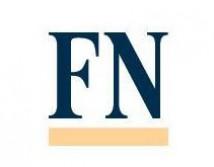
Elite group takes all the prizes
ETF assets have grown at a compound rate of 26.5% over the past 10 years. In the year to July, assets were up 12.9% across 4,722 ETFs, with 9,597 listings, assets of $1.723 trillion, from 203 providers on 54 exchanges.
In the country/region category, the US wins a gold medal, accounting for 70.2% of global assets. Europe lands silver with 18.5%, Asia Pacific (ex Japan) takes a bronze with 4% while the rest of the world shares the remaining 7.3%. The first ETFs were launched in Canada in 1990 followed by the US in 1993, Asia in 1999 and Europe in 2000, so the medallists have had a head start.
The three medal winners among providers collectively captured 68.8% of global assets under management. iShares takes gold with 38.6%, followed by State Street (17.7%) and Vanguard (12.5%). Fourth-placed PowerShares manages 3.4% of global assets and the remaining 199 managers are responsible for just over a quarter of the assets. The top three firms have captured between 68% and 71% of assets for many years and it will be very difficult for a new entrant or an existing firm to grow organically into a medal-winning position.
Until the end of July, $131bn of net new assets flowed into ETFs globally – $17bn more than the same period last year. The top three firms from the AuM competition are also winning the NNA race, accounting for 63% of all new assets: Vanguard is in gold position with 26.3%, iShares (24.2%) in silver and State Street’s SPDR in bronze with 12.5%.
The trading racing is dominated by exchanges in the US – NYSE Arca took gold, capturing 86.4% of average daily volumes. Nasdaq (5.4%) and the London Stock Exchange (1.2%) limp into silver and bronze positions respectively. That leaves the other 51 exchanges with primary listings of ETFs to split the remaining 7% of average daily volume.
In the first half of 2012, the top three brokers account for 37.5% of advertised volumes of US and European-listed ETFs: Bank of America Merrill Lynch wins gold with 16.8%, Knight Securities (11.2%) takes silver and JP Morgan (9.5%) lands bronze. The top 20 brokers account for 94% with the remaining 173 brokers sharing 6%.
The products offered by the top three providers in addition to capturing the lion’s share of global assets account for 74.1% of the global average daily volume in July. SPDR wins gold by a large margin, accounting for 44.5% of global ADV, iShares comes in second with 26.5% while ProShares (5%) wins bronze.
The race for assets tracking benchmarks sees the top three index providers accounting for 55.1% of global assets. S&P Dow Jones wins gold with the largest number of ETFs (1,052) tracking its benchmarks and 25.6% of assets, followed by MSCI with 568 products and 19.7% of AuM. Barclays Capital is third with 9.8% of assets. The other 100 index providers split the remaining 44.9%.
BlackRock’s iShares has a significant foothold in all regions but other industry giants are challenging iShares on its home turf. Vanguard has taken a further 3.1% of market share while iShares declined 3.7% since the start of 2011.
We will see some movement in the relative size of the industry heavyweights with benchmark, performance, trading, liquidity and product structure still being key considerations. But costs, as we see from the US – and from BlackRock chief executive Larry Fink’s plans to cut fees on some core iShares – ETFs will be an increasingly important component.
The annual total expense ratio charged by ETF promoters is not, however, the sole consideration for investors who could more meaningfully look to the total cost of investing in the product. This figure should equate with the performance difference between the fund and the index. Finally, for the secondary market investors, it is important to consider the spread on the investment itself and ensure the optimal execution point.
